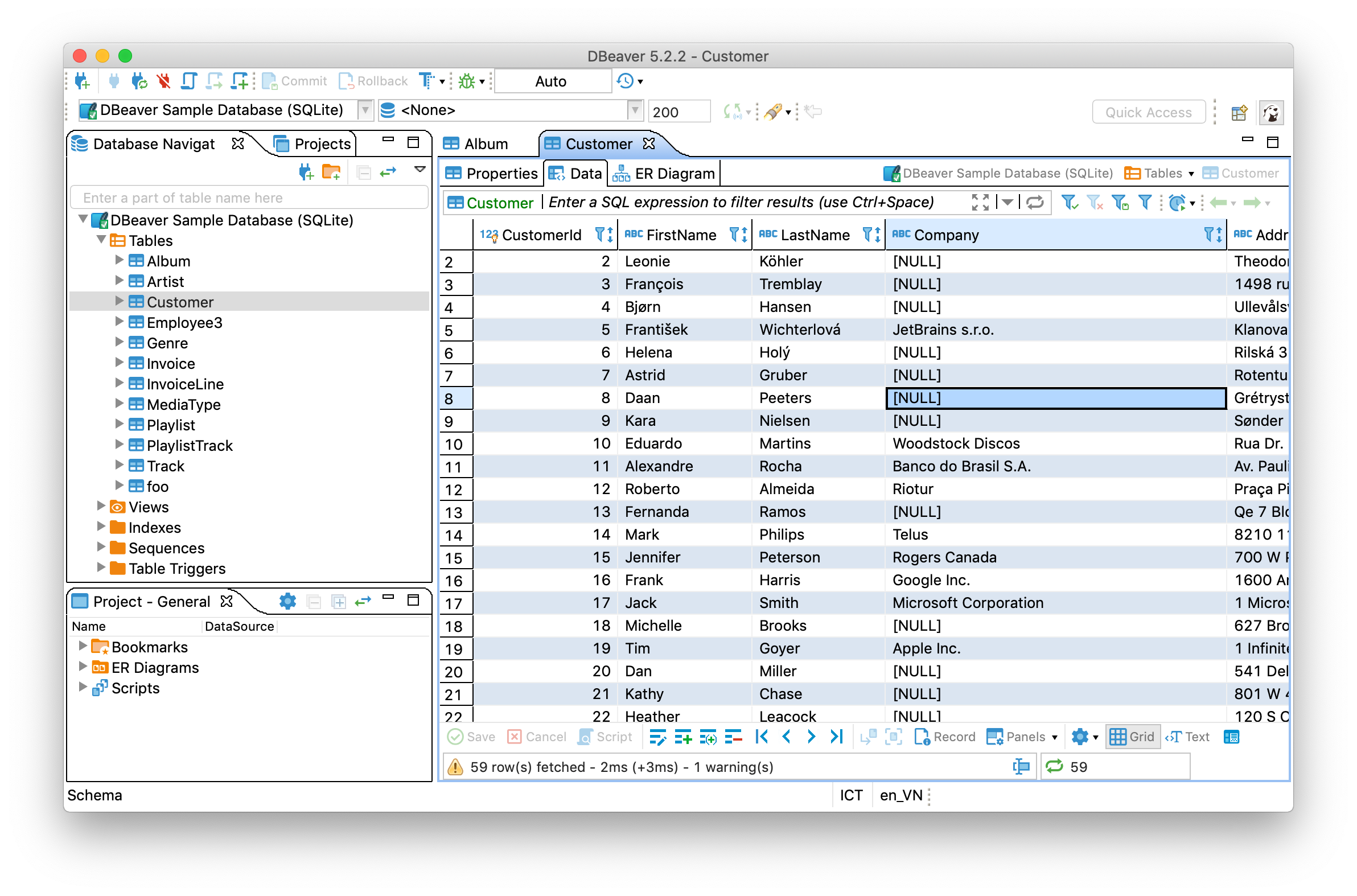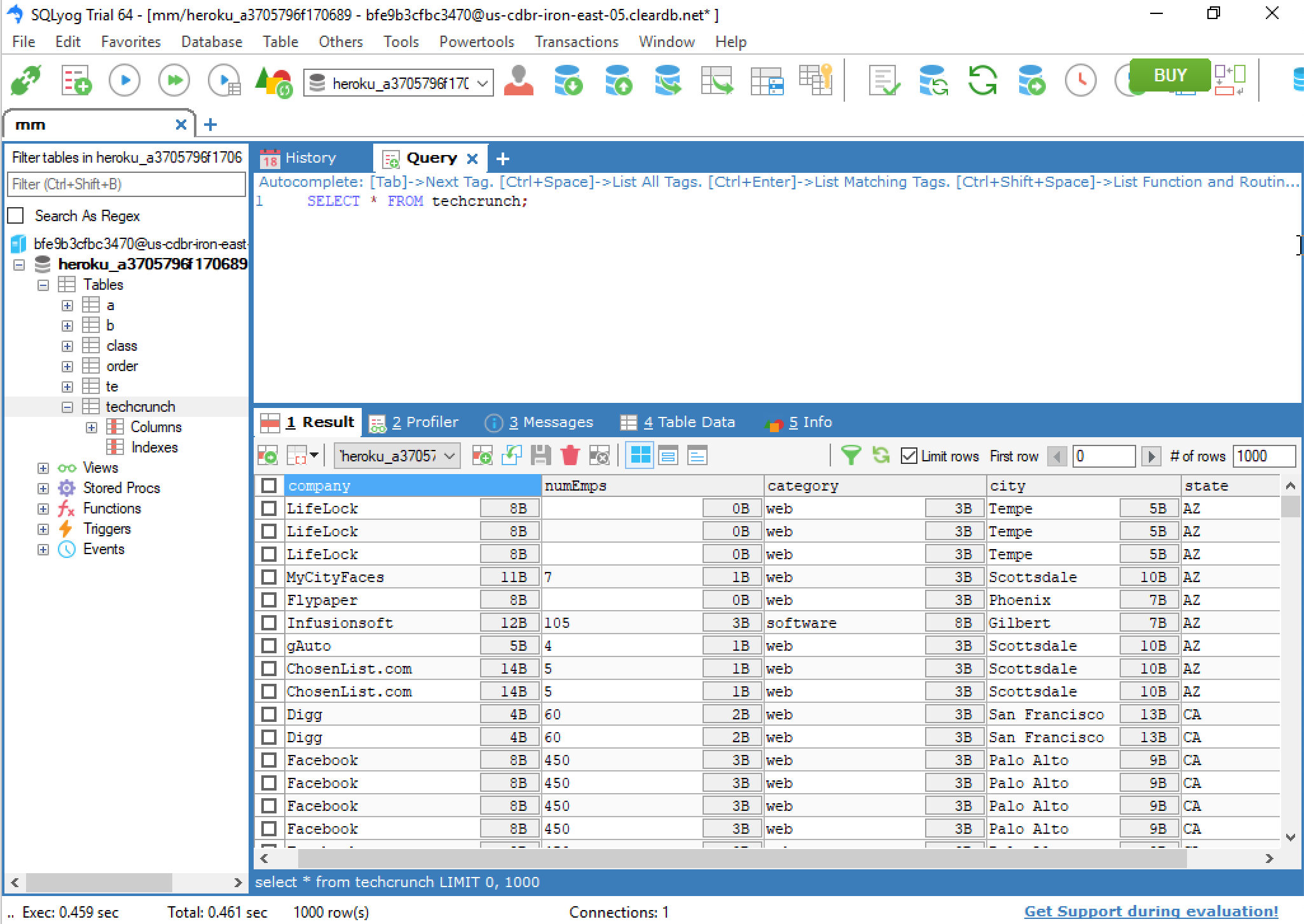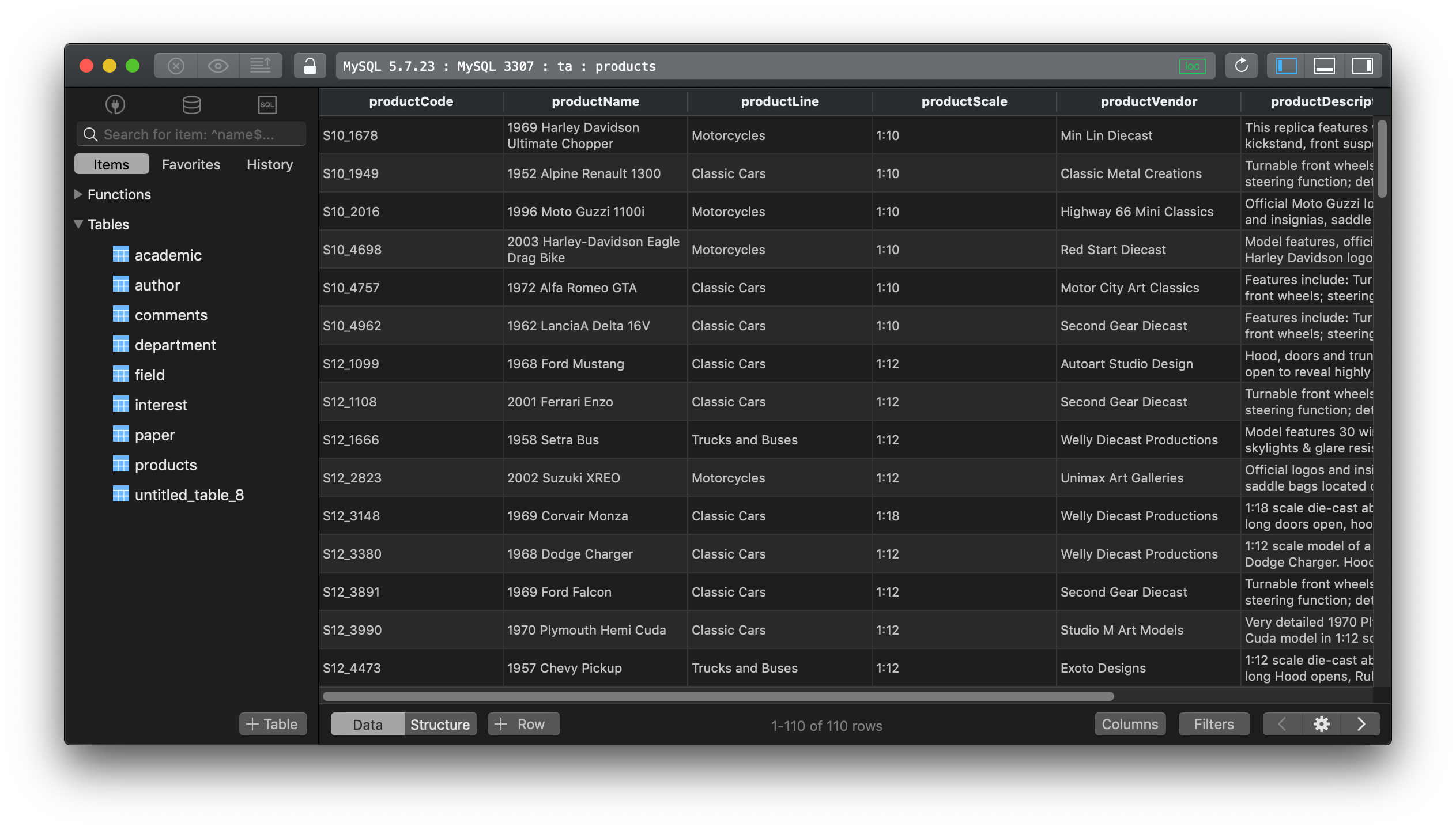DBeaver vs SQLyog vs TablePlus - A quick comparison
In this post, we are going to compare three popular database GUI clients: DBeaver, SQLyog, TablePlus; and capture some pros and cons of each tool.
1. DBeaver
DBeaver provides a powerful database client, but it’s a little bit overwhelming.
-
Supported platforms: DBeaver works on all platforms supported by Eclipse framework, previously Windows, Linux, MacOS, Solaris, AIX, HP-UX. Starting from version 4.2, it limited its support to Windows, MacOS, and Linux only.
-
Supported Drivers: DBeaver community version can work with any database server which has JDBC driver (which means a lot of databases): MySQL, PostgreSQL, MariaDB, SQLite, Oracle, to DB2, SQL Server, Sybase, MS Access, Teradata, Firebird, Derby, etc. The enterprise adds support for non-JDBC data sources (WMI, MongoDB, Cassandra, Redis).
-
Pricing: DBeaver has a community version (DBeaver CE) which is free and open source. There’s also an enterprise edition (DBeaver EE) with more driver support, more advanced features and dedicated customer support for enterprises.

Pros:
- Cross-platform
- Multiple drivers support
- Assigning connection color
- Entity-relationship diagrams are available
- Built-in reformat SQL
Cons:
- It runs on a Java virtual machine, eats up a lot of RAM while running.
- Confusing icon design and somewhat unintuitive. Sometimes you don’t know where to look for what you need.
- Autocomplete is slow, and not so smart.
2. SQLyog
For those Windows users, SQLyog is among the most popular solutions for MySQL database management.
-
Supported platforms: SQLyog works on Windows only.
-
Supported Drivers: SQLyog was built specifically for MySQL and currently, it only supports MySQL and the drop-placement MariaDB.
-
Pricing: SQLyog has a community version which is free for personal use but it has a limited set of feature. The commercial version has a 14-day trial period. After that, you will need to purchase for $299/user.

Pros:
- It’s feature rich
- Visual Query Builder and Schema Designer
- Migration Tools to Copy Database to different Host/Database.
- SSH Tunneling and SSL Connections
- Smart Autocomplete
- User management
- Database diagnostics to quickly check, repair, analyze and optimize your databases.
- The commercial version includes some advanced features such as Database Synchronization Wizard, Visual Data Comparison Wizard, Scheduled Backups/Scheduled Jobs and Query Profiler
Cons:
- The UI is a little clumsy, the icon design doesn’t always communicate the purpose of the feature.
- Only supports MySQL. If you work with more database other than MySQL and MariaDB, it’s a huge drawback.
- Only works on Windows
- It’s pricey.
3. TablePlus
With a native build and a lightweight size, TablePlus is a very handy tool for managing multiple databases on Mac and Windows.
-
Supported platforms: TablePlus is built native for each platform. It started out with a native version for Mac, then another version for Windows, and a version for Linux was introduced recently as an alpha release. It also has an iOS version.
-
Supported Drivers: TablePlus supports a handful of relational databases: MySQL, PostgreSQL, SQLite, Microsoft SQL Server, Amazon Redshift, MariaDB, CockroachDB, Vertica, Oracle; and two popular NoSQL databases: Cassandra and Redis.
-
Pricing: TablePlus has a free version with full set of features which you can download and use forever, but there are some usage limitations. If you use it heavily, the license costs $59 to remove all those limitations.

Pros:
- Native build for each platform so it’s fast, lightweight, and stable.
- Clean and simple interface.
- Multiple drivers support
- Multiple conditions data filter
- Queries history and keyword binding favorite.
- Streaming results and async loading to show queries results faster and doesn’t block the UI.
- Very quick inline editing for table data and structure, you also can edit query results directly.
- Smart query editor with highlight syntax, instant autocomplete, SQL reformat.
- Multiple carets
- A plugin system to extend the app.
- Quick support. TablePlus releases new updates regularly and responds to users’ requests almost immediately.
Cons:
It currently lacks of some advanced features such as ER Diagram, database compare tool to Diff and Sync, etc.
4. Conclusion
Go with SQLyog if you:
- Work with MySQL only
- Work on Windows only
- Are comfortable with the cost
Go with DBeaver if you:
- Work with all kinds of databases
- Prefer a an old-fashioned design with all function buttons on the UI.
Go with TablePlus if you:
- Are a fan of native experience
- Work with multiple databases
- Want a modern design with better usability
- Want quick support & development cycle.